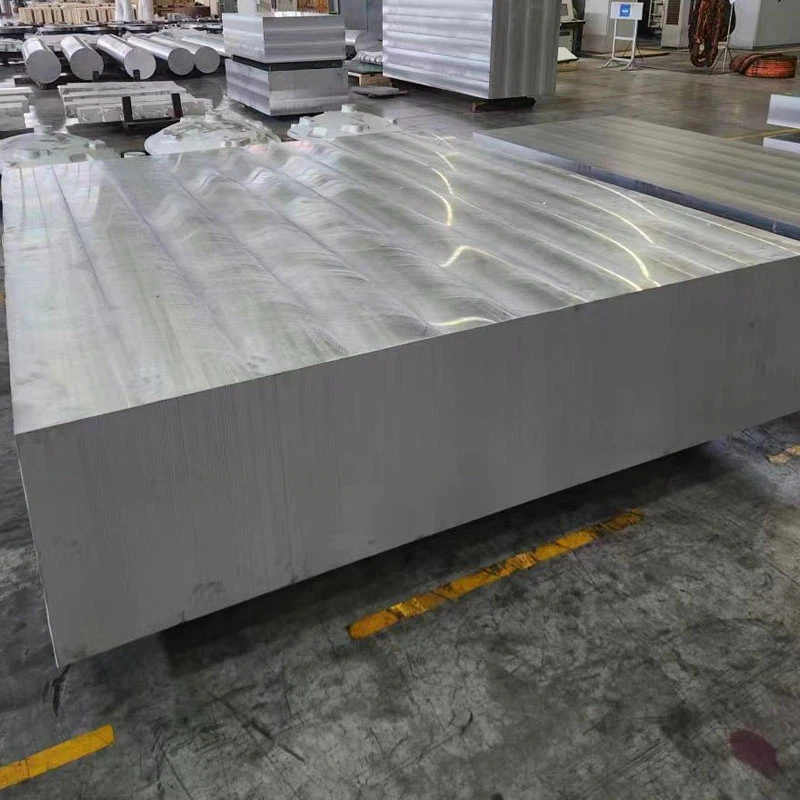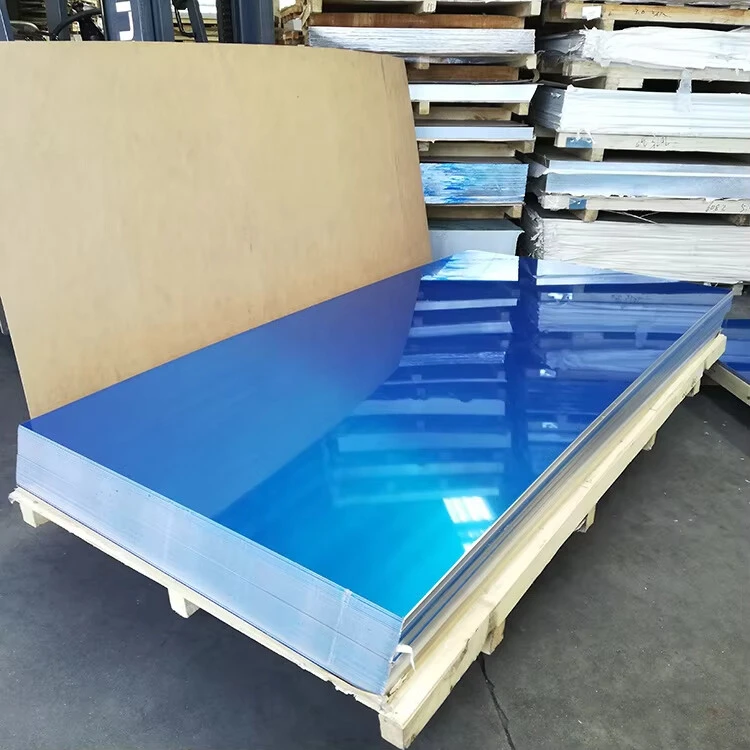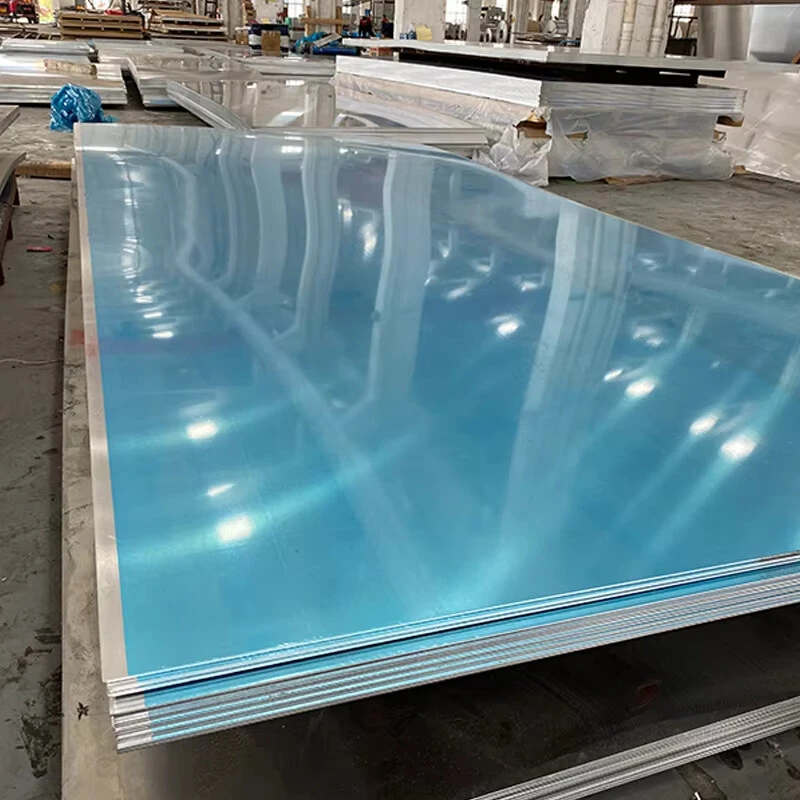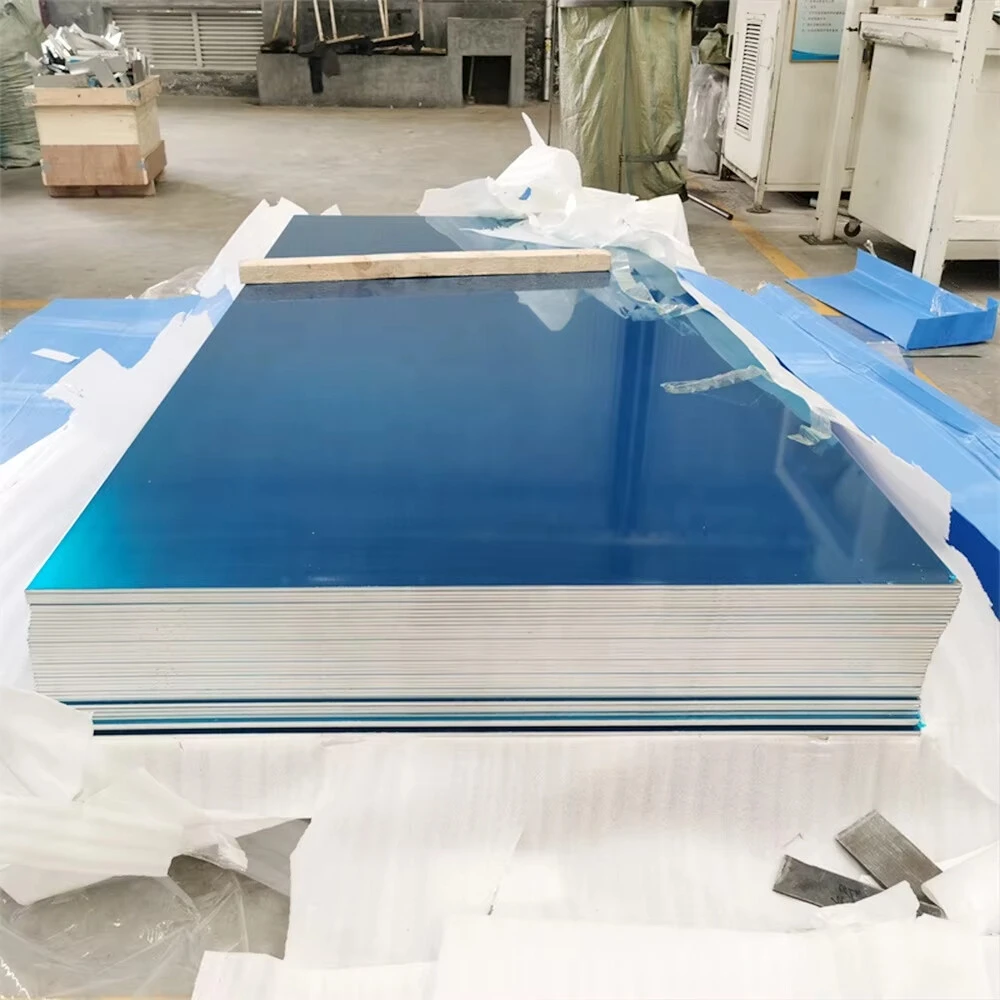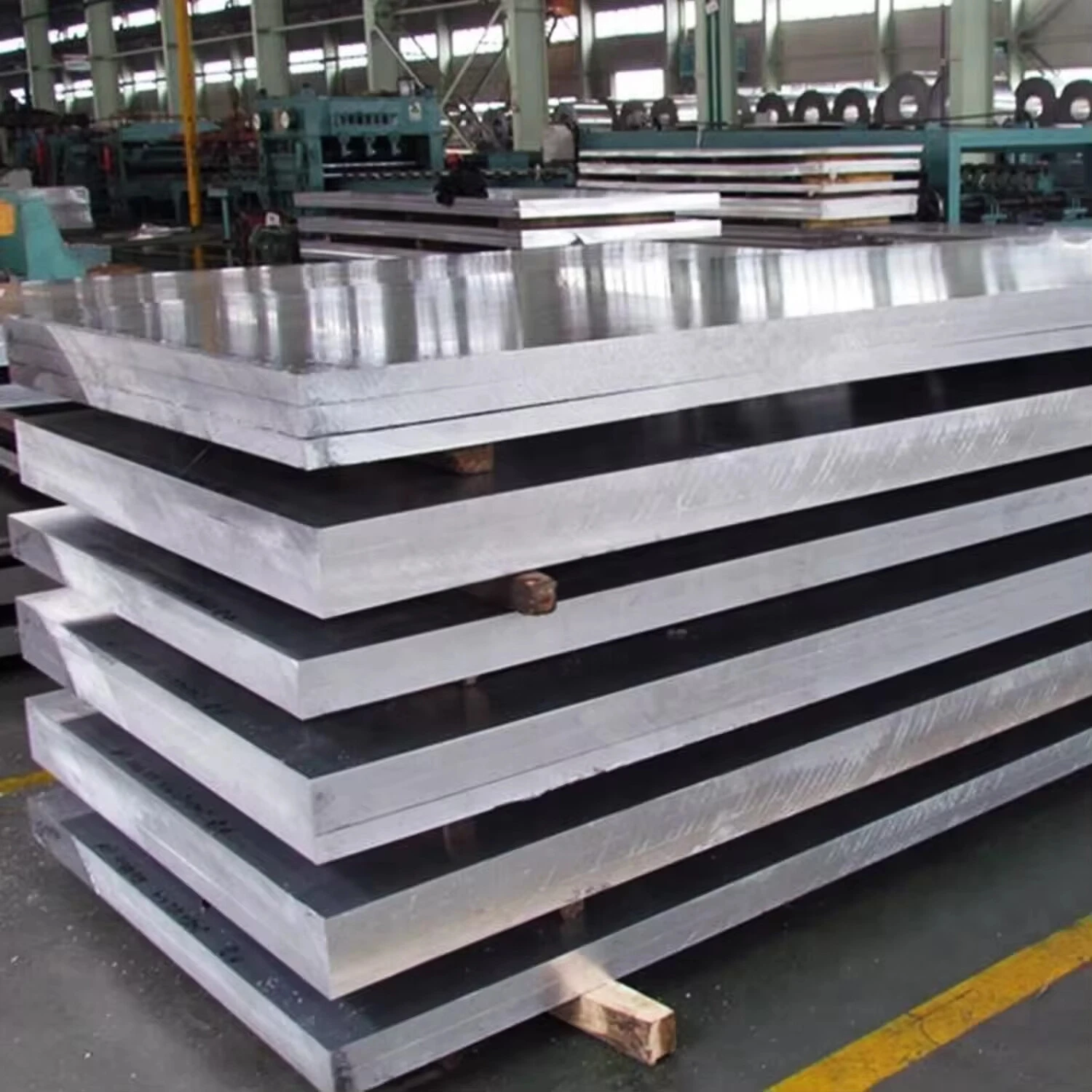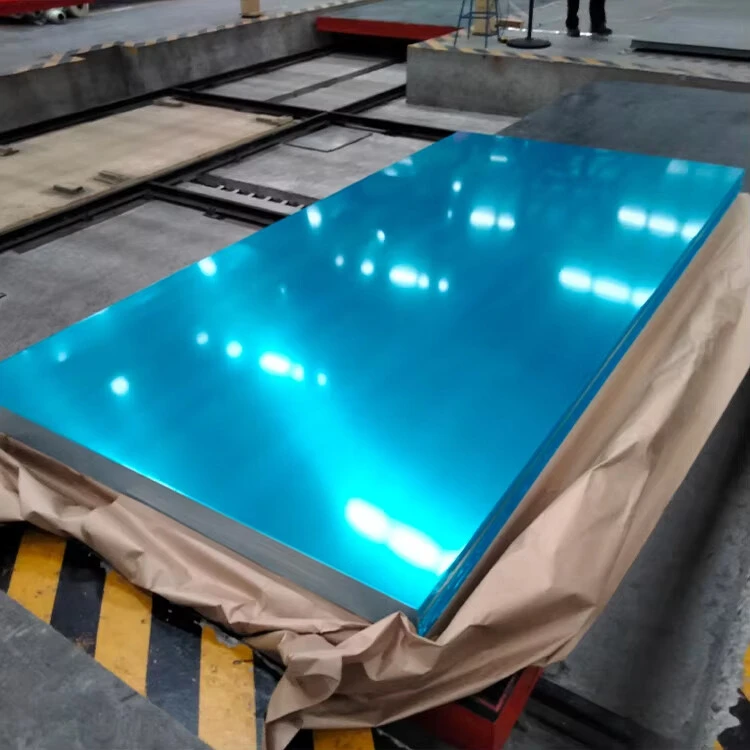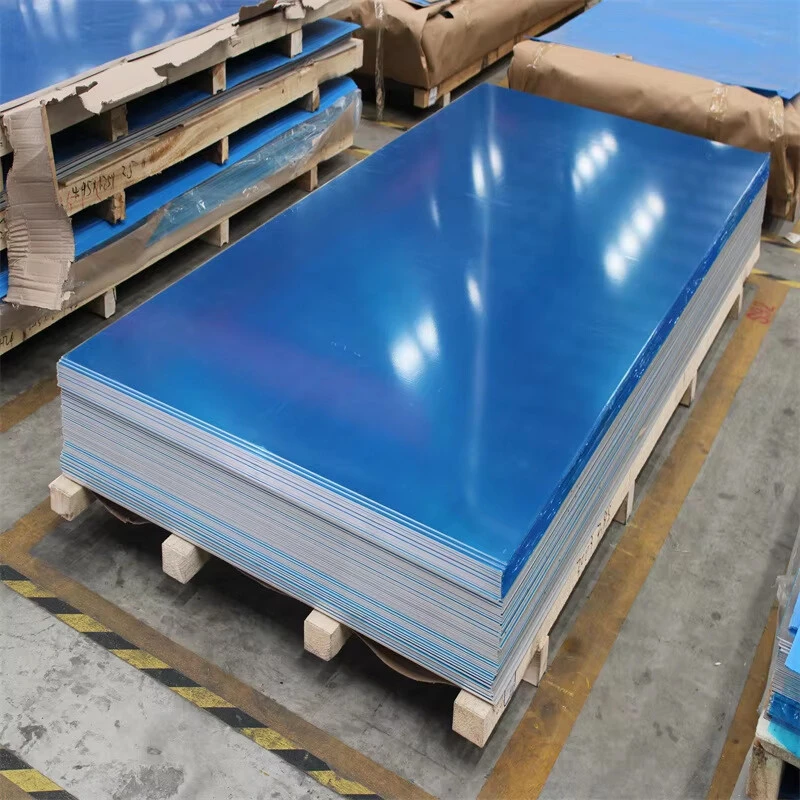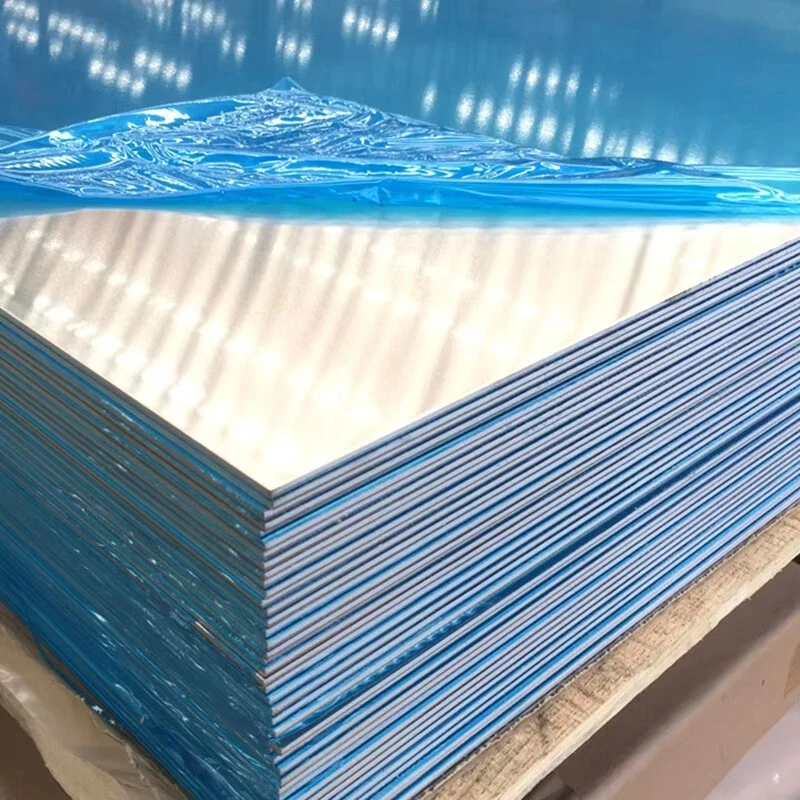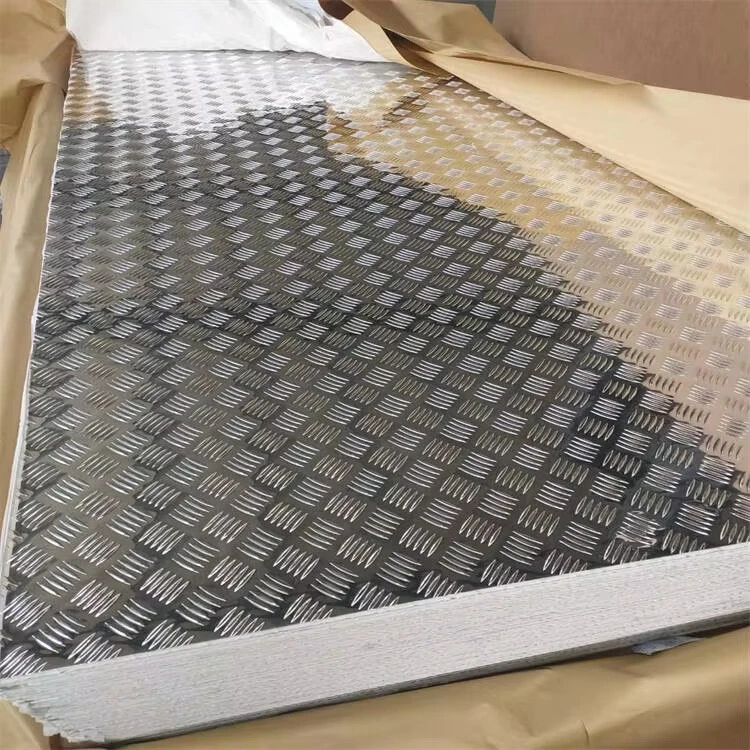1. Material Composition & Manufacturing Process
5083 aluminum alloy (ASTM B209, EN AW-5083) is a high-strength, non-heat-treatable Al-Mg alloy renowned for exceptional weldability and superior corrosion resistance in marine environments. The ultra-thick forged plate variant offers enhanced mechanical properties through controlled deformation processing:
Primary Alloying Elements:
Magnesium (Mg): 4.0-4.9% (primary solid-solution strengthener)
Manganese (Mn): 0.40-1.0% (grain structure refinement)
Chromium (Cr): 0.05-0.25% (corrosion resistance enhancement)
Titanium (Ti): 0.05-0.15% (grain refinement)
Base Material:
Aluminum (Al): ≥92.4% (balance)
Controlled Impurities:
Iron (Fe): ≤0.40% max
Silicon (Si): ≤0.40% max
Copper (Cu): ≤0.10% max
Zinc (Zn): ≤0.25% max
Specialized Ultra-Thick Forging Process:
Premium Ingot Production:
Direct Chill (DC) semi-continuous casting
Grain refinement with Ti-B additions
Melt degassing to <0.1ml H₂/100g Al
Filtration through ceramic foam filters
Homogenization Treatment:
500-520°C for 24-36 hours
Computer-controlled cooling rate
Microstructural equilibration
Surface Preparation:
Scalping of segregation layer (minimum 10mm)
Surface inspection for defects
Preheating for Forging:
Staged heating to 380-430°C
Temperature uniformity ±5°C
Multi-Directional Open-Die Forging:
Initial forging temperature: 400-425°C
Final forging temperature: 340-380°C
Deformation ratio: 3:1 to 5:1
Multi-directional working to optimize properties
Specialized dies for ultra-thick sections
Controlled Cooling:
Programmed cooling rate to minimize residual stress
Air-cooling with thermal blankets for thick sections
Stress Relief Treatment:
240-300°C for 1 hour per 25mm thickness
Furnace cooling to below 200°C
Final Processing:
Precision machining to customer specifications
Surface inspection and cleaning
Protective packaging for shipment
All manufacturing processes are performed under ISO 9001 quality management system with complete traceability.
2. Mechanical Properties of Ultra-Thick 5083 Forged Plate
| Property | Minimum | Typical | Test Standard | Ultra-Thick Advantage |
| Ultimate Tensile Strength | 290 MPa | 305-330 MPa | ASTM B557 | Uniform properties throughout section |
| Yield Strength (0.2%) | 145 MPa | 160-185 MPa | ASTM B557 | Enhanced through-thickness strength |
| Elongation (50mm gauge) | 12% | 16-22% | ASTM B557 | Superior ductility across full section |
| Hardness (Brinell) | 85 HB | 90-100 HB | ASTM E10 | Consistent hardness profile |
| Shear Strength | 175 MPa | 185-200 MPa | ASTM B769 | Enhanced joint reliability |
| Fatigue Strength (10⁸) | 120 MPa | 125-140 MPa | ASTM E466 | Improved cyclic loading performance |
| Compressive Yield | 145 MPa | 160-190 MPa | ASTM E9 | Critical for load-bearing applications |
| Bearing Strength (e/D=2.0) | 385 MPa | 400-430 MPa | ASTM E238 | Superior fastener performance |
| Impact Energy (Charpy) | 35 J | 40-50 J | ASTM E23 | Enhanced toughness at low temperatures |
Through-Thickness Performance:
Property variation <5% between surface and core (up to 200mm thickness)
Directionality ratio (L:LT:ST): 1.00:0.95:0.90 for tensile strength
Core temperature maintained within critical processing window
Hardness variation <8 HB from surface to center
3. Microstructural Control for Ultra-Thick Sections
Critical Forging Parameters:
Strain Distribution Control:
Minimum total true strain: 1.1-1.3
Strain rate: 0.01-0.1 s⁻¹
Multi-directional working (minimum 25% in secondary direction)
Intermittent reheating for sections >150mm
Temperature Management:
Maximum temperature gradient: 30°C across section
Computer-controlled thermal profile monitoring
Extended dwell times for temperature homogenization
Specialized handling equipment for minimal heat loss
Microstructural Characteristics:
Grain Size: ASTM 5-7 (30-60μm)
Grain Morphology: Partially recrystallized structure
Al₆Mn dispersoid distribution: 0.1-0.5μm diameter
Mg₂Si precipitate control: <0.5 volume percent
Al-Fe-Mn intermetallic phases: Controlled morphology
Recrystallized Volume Fraction: 40-60%
Texture: Mixed deformation/recrystallization texture
Grain Aspect Ratio: 1.5:1 maximum in final product
Special Features:
Subgrain structure with high misorientation angles
Limited recovery due to Mg solute drag effect
Al₃Mg₂ precipitation controlled to prevent sensitization
Enhanced dislocation density: 5-8×10¹⁰/cm²
4. Dimensional Specifications & Tolerances
| Parameter | Standard Range | Precision Tolerance | Commercial Tolerance |
| Thickness | 150-400 mm | ±3 mm | ±5 mm |
| Width | 1000-3000 mm | ±5 mm | ±8 mm |
| Length | 2000-8000 mm | ±7 mm | ±12 mm |
| Flatness | N/A | 0.2% of length | 0.4% of length |
| Parallelism | N/A | 0.6% of thickness | 1.0% of thickness |
| Edge Straightness | N/A | 2 mm/m | 4 mm/m |
| Surface Roughness | N/A | 6.4 μm Ra max | 12.5 μm Ra max |
Ultra-Thick Specific Parameters:
Density: 2.66 g/cm³ (±0.01)
Weight Calculation: Thickness(mm) × Width(m) × Length(m) × 2.66 = Weight(kg)
Maximum Single Plate Weight: 20,000 kg
Machining Allowance: Recommend 15mm per side minimum for critical dimensions
Stress Relief: Required before precision machining for plates >200mm
Plate Flatness: Measured under self-weight on flat surface
Ultrasonic Testing: 100% volumetric inspection available
5. Corrosion Resistance Performance
| Environment | Performance | Corrosion Rate | Expected Service Life |
| Marine Atmosphere | Excellent | <0.02 mm/year | 30+ years |
| Immersed Seawater | Very Good | <0.10 mm/year | 25+ years |
| Industrial Exposure | Excellent | <0.05 mm/year | 25+ years |
| Fresh Water | Excellent | Negligible | 40+ years |
| Stress Corrosion | Excellent | Highly resistant | Design life |
| Exfoliation | Excellent | EXCO rating EA | Design life |
| Galvanic Coupling | Fair | Isolation required | Application dependent |
Corrosion Protection Options:
Anodizing:
Type II (Sulfuric acid): 10-25μm thickness
Type III (Hard anodize): 25-75μm thickness
Marine-grade sealing treatments
Conversion Coatings:
Chromate conversion per MIL-DTL-5541
Chrome-free alternatives for environmental compliance
Titanium/Zirconium-based treatments
Protective Systems:
Epoxy primer + polyurethane topcoat
Marine-grade multi-layer systems
Sacrificial zinc-rich primers
High-build epoxy coatings for immersion service
Environmental Performance Factors:
Sensitization Resistance: Superior to 5086 alloy
NAMLT Test Performance: <15mg/cm²
IGC Resistance: Excellent after stabilization treatment
H₂ Embrittlement: Minimal susceptibility
6. Machining & Fabrication Characteristics
| Operation | Tool Material | Recommended Parameters | Notes for Ultra-Thick Sections |
| Heavy Milling | Carbide | Vc=300-600 m/min, fz=0.15-0.30 mm | Climb milling recommended |
| Deep Hole Drilling | Carbide drills | Vc=60-100 m/min, fn=0.15-0.25 mm/rev | Step drilling for deep holes |
| Face Milling | PCD cutters | Vc=500-1000 m/min | High positive rake angles |
| Turning | Carbide/PCD | Vc=200-500 m/min | Rigid setup essential |
| Tapping | HSS-E taps | Vc=10-20 m/min | 50% thread recommended |
| Sawing | Carbide-tipped | 40-60 m/min | Flood coolant mandatory |
Fabrication Considerations:
Forming Limits: Minimum bend radius 2.5× material thickness
Cold Working: Limited to 15-20% before annealing
Hot Working: 260-370°C optimal temperature range
Weldability: Excellent with 5183, 5356, or 5556 filler
Welding Methods: GMAW, GTAW, FCAW suitable
Post-weld Treatment: Brush/needle scaling recommended
Stress Relief After Welding: 200°C for 1 hour per 25mm
Cutting Methods: Plasma, waterjet, or sawing preferred
7. Welding Performance & Recommendations
| Welding Process | Filler Material | Parameters | Special Considerations |
| GMAW (MIG) | ER5183, ER5556 | DCEP, 22-26V, 140-250A | Pulse spray transfer recommended |
| GTAW (TIG) | ER5183, ER5356 | AC, 12-15V, 120-200A | Thoriated tungsten electrodes |
| FCAW | E5183T, E5556T | DCEP, 24-28V, 150-260A | Minimal interpass cleaning |
| SAW | ER5183, ER5356 | 26-30V, 350-550A | Neutral or slightly basic flux |
Welding Best Practices for Ultra-Thick Sections:
Joint Preparation:
X-groove or double-V for thickness >25mm
Root gap 2-4mm
Root face 1-3mm
Bevel angle 50-60°
Thorough degreasing with acetone or MEK
Preheating:
Generally not required
For sections >200mm, preheat 50-80°C to reduce thermal gradient
Interpass Temperature:
Maximum 120°C
Monitor with infrared thermometer
Post-weld Treatment:
Stress relief recommended for thick sections
Thorough cleaning of flux and spatter
Inspection Methods:
Visual inspection per AWS D1.2
Radiographic or ultrasonic testing for critical joints
Dye penetrant for surface defects
8. Physical Properties for Engineering Design
| Property | Value | Design Implications |
| Density | 2.66 g/cm³ | Weight calculations and buoyancy |
| Melting Range | 574-638°C | Welding and heat treatment parameters |
| Thermal Conductivity | 117 W/m·K | Heat dissipation in thermal applications |
| Electrical Conductivity | 29% IACS | Electrical applications and design |
| Specific Heat Capacity | 900 J/kg·K | Thermal inertia calculations |
| Thermal Expansion | 23.8 ×10⁻⁶/K | Expansion joint design and thermal stress |
| Young’s Modulus | 71 GPa | Structural stiffness and deflection |
| Poisson’s Ratio | 0.33 | Strain relationships in complex loading |
| Damping Capacity | Moderate (0.01-0.02) | Vibration control applications |
Environmental Performance:
Operating Temperature Range: -196°C to +200°C
Cryogenic Performance: Excellent toughness retention
Fire Resistance: Non-combustible
Magnetic Properties: Non-magnetic
Radiation Resistance: Excellent
Recyclability: 100% recyclable with no quality loss
Environmental Impact: Lower energy footprint than steel
9. Quality Assurance & Testing Protocol
Standard Inspection Regime:
Chemical Composition Testing:
Optical emission spectroscopy
Verification of all alloying elements
Mechanical Testing:
Tensile testing (longitudinal and transverse directions)
Hardness mapping (surface and cross-section)
Impact testing for critical applications
Non-Destructive Testing:
Ultrasonic inspection per ASTM A578/A578M
Dye penetrant inspection for surface defects
Dimensional Inspection:
CMM verification of critical dimensions
Thickness mapping at specified grid points
Flatness measurement under self-weight
Microstructural Analysis:
Grain size determination
Inclusion rating per ASTM E45
Sensitization testing for H tempers
Metallographic examination
Certification Options:
Mill Test Report (EN 10204 3.1)
Third-party inspection certification (EN 10204 3.2)
DNV-GL certification for marine applications
ABS certification for marine structures
Lloyd’s Register certification
Customer-specific certification requirements
Material traceability documentation
Production record documentation
10. Industrial Applications & Use Cases
Primary Applications:
Naval and commercial shipbuilding
Offshore oil & gas platforms
Pressure vessel components
Cryogenic storage and transport
Heavy transportation structures
Bridge decking and structural components
Defense industry applications
Chemical processing equipment
Mining equipment structures
Marine propulsion system components
Specific Use Cases:
LNG Carrier Structural Components:
Superior low-temperature toughness
Excellent weldability for complex structures
Good strength-to-weight ratio

